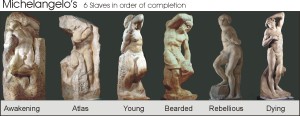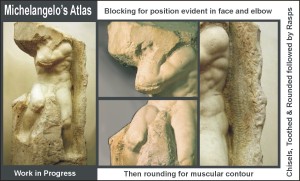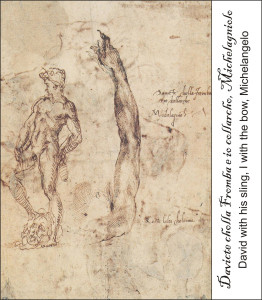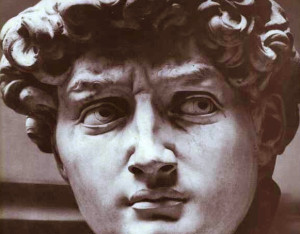I have a special place in my heart for Michelangelo’s unfinished works… most abundantly found in the collection of statues partially carved for Pope Julius II Tomb. The series of six Slaves, to varying degrees, show step by step the masters creative thought, his planning and execution.
From the Awakening Slave still trapped within it’s megalith, through to the perfection of the completed Dying Slave, we see the unison of a singular method. Michelangelo’s gift from God, his representation of perfection within the human form. Classical Realism.
Of these, Atlas is the finest example of Michelangelo’s method. His effective use of available stone. Blocking techniques used to anchor his modelled concept within the mass. As seen in the partial carving of the face and initial rough cutting of the elbow. This then is followed by the rounding of the stone; again evident in the comparative elbow and mid arm. This was done with the point, toothed then rounded chisel, with the rasp smoothing out the surface.
Its no wonder how many of his contemporaries and today’s art historians fall under the spell of Michelangelo’s ‘il terrible’ and consider his work as ‘non finito’. The master’s overpowering skill and creative flow lend even unfinished work the air of completion. Continue reading




